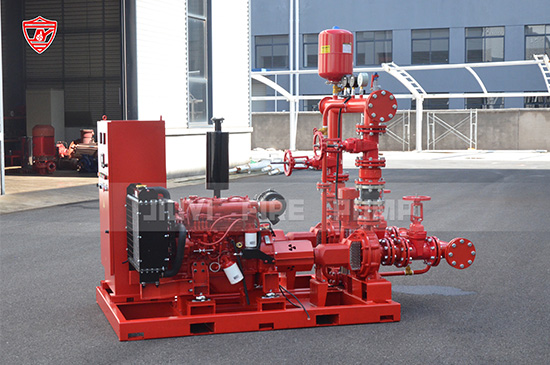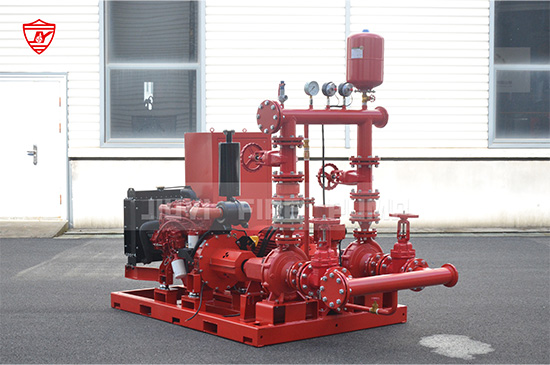Fire pumps are the heart of many fire protection systems. They provide the necessary water pressure to sprinkler systems, hydrants, and standpipes when a building’s normal supply cannot meet demand. Despite their importance, a common question arises among building owners, facility managers, and safety professionals: does a fire pump need its own dedicated service?
The short answer is yes. Fire pumps require specialized and routine servicing separate from other building equipment. This article will explore why dedicated fire pump service is critical, what regulations demand, and how proper maintenance impacts system reliability and compliance.
Unlike standard water pumps or HVAC equipment, fire pumps are not used daily. They often sit idle for long periods but must perform flawlessly in an emergency. This unique role creates challenges:
Critical Safety Role
A fire pump is not just machinery—it is life safety equipment. Its failure during a fire could lead to catastrophic property loss or worse, endanger lives.
Regulatory Requirements
Codes such as NFPA 20 (Standard for the Installation of Stationary Fire Pumps) and NFPA 25 (Standard for the Inspection, Testing, and Maintenance of Water-Based Fire Protection Systems) explicitly outline requirements for fire pump maintenance. Compliance demands specialized service separate from general building upkeep.
Complex System Integration
Fire pumps are tied into alarms, controllers, power supplies, and sometimes multiple water sources. Servicing them requires knowledge that goes beyond general mechanical maintenance.
Reliability Over Time
Because fire pumps are not running continuously, issues like seal deterioration, corrosion, or controller malfunctions may go unnoticed without proper service.
Dedicated fire pump service typically covers inspection, testing, and maintenance tasks that go well beyond a visual check. The scope includes:
Check for leaks, unusual noises, and pressure gauge readings
Verify electrical connections and controller status
Ensure valves are open and suction tanks are full
Conduct a no-flow “churn test” to verify pump operation
Record pressure readings and compare with baseline performance
Flow test under rated, 150%, and churn conditions
Verify that pump meets manufacturer specifications and NFPA requirements
Measure suction and discharge pressure, net pressure, and flow rate
For electric fire pumps: inspect motor windings, connections, and power supply
For diesel engine fire pumps: check coolant levels, fuel supply, batteries, and exhaust systems
Fire pump controllers (electric or diesel) are vital to pump performance. They must be tested for:
Automatic start function
Pressure switch calibration
Alarm signals to the fire alarm system
Lubricating bearings and moving parts
Replacing seals or worn components
Cleaning strainers and suction lines

The National Fire Protection Association (NFPA) provides the gold fire pump service requirements standard. Two key standards apply:
NFPA 20 – Installation of fire pumps, outlining system design and components.
NFPA 25 – Inspection, Testing, and Maintenance of Water-Based Fire Protection Systems, specifying service intervals and responsibilities.
Local fire codes often adopt NFPA standards, making compliance legally enforceable. Insurance providers may also require documented proof of fire pump service. Neglecting service could result in noncompliance, fines, or denied claims after a fire.
Some building owners assume that because fire pumps rarely run, servicing can be postponed. This is a dangerous misconception. Risks of neglect include:
Failure During an Emergency
A fire pump that has not been tested may fail to start when needed most.
Hidden Mechanical Deterioration
Seals, bearings, and gaskets can dry out or corrode. Without service, these issues remain hidden until too late.
Controller Malfunctions
Fire pump controllers rely on sensors and relays. Even minor faults could prevent the pump from starting automatically.
Code Violations
Authorities having jurisdiction (AHJs) can issue violations or penalties for lack of service records.
Increased Insurance Risk
Many insurers require documentation of fire pump inspections and testing. Noncompliance could void coverage.
Because of their specialized role, fire pumps must be serviced by qualified professionals familiar with NFPA requirements and fire pump technology. A general building maintenance contractor is typically not sufficient. Certified fire protection service providers can:
Accurately interpret NFPA standards
Conduct performance flow testing with calibrated equipment
Troubleshoot pump and controller issues
Provide detailed inspection reports for AHJs and insurers
Life Safety Assurance
Proper service ensures the pump will operate as intended in an emergency.
Regulatory Compliance
Meeting NFPA 25 standards protects building owners from legal and financial penalties.
Extended Equipment Life
Routine maintenance helps avoid costly premature failures.
Improved Insurance Standing
Regularly documented service often results in more favorable insurance terms.
Peace of Mind
Building managers, owners, and occupants gain confidence knowing the system is reliable.
Keep Accurate Records: Maintain detailed logs of inspections, tests, and maintenance actions.
Schedule Service in Advance: Don’t wait until a fire marshal’s inspection—service regularly.
Use NFPA 25 Checklists: Align service tasks with NFPA’s official guidelines.
Partner with a Reliable Provider: Select a service company with proven expertise in fire protection systems.
Train On-Site Staff: Ensure building personnel understand weekly inspection basics, even if full service is contracted out.

So, does a fire pump need its service? Absolutely. A fire pump is not just another piece of building equipment—it is a critical life safety system that demands specialized, routine, and documented service. Compliance with NFPA standards, insurance requirements, and local codes ensures not only legal protection but also reliable performance when lives are on the line.
By investing in dedicated fire pump service, building owners safeguard their property, protect occupants, and maintain the integrity of their fire protection system. In fire safety, prevention is always less costly than failure.